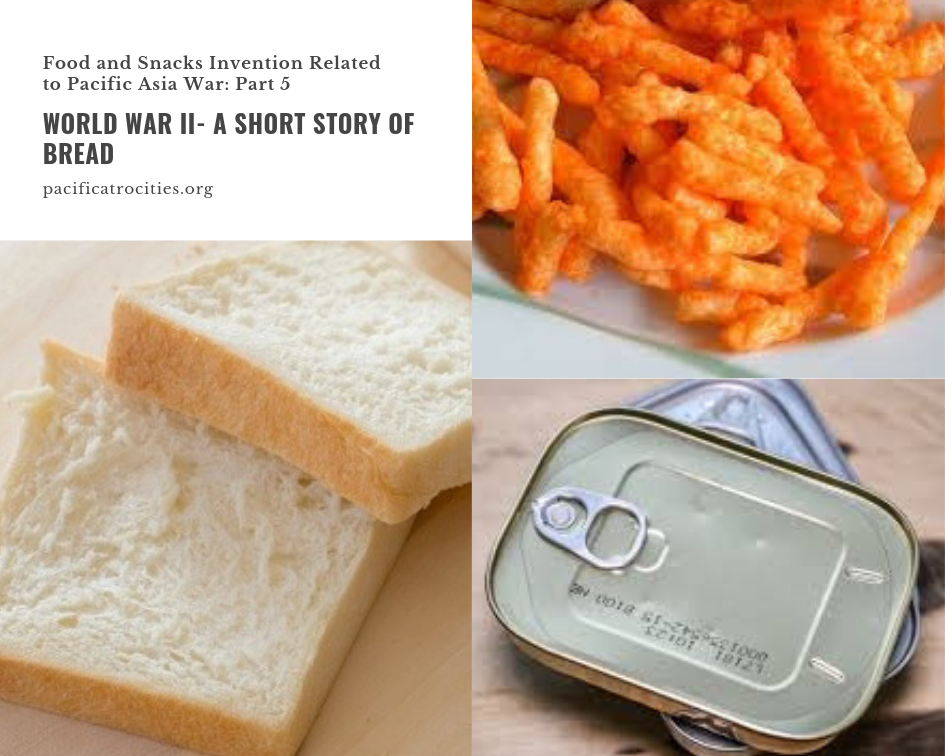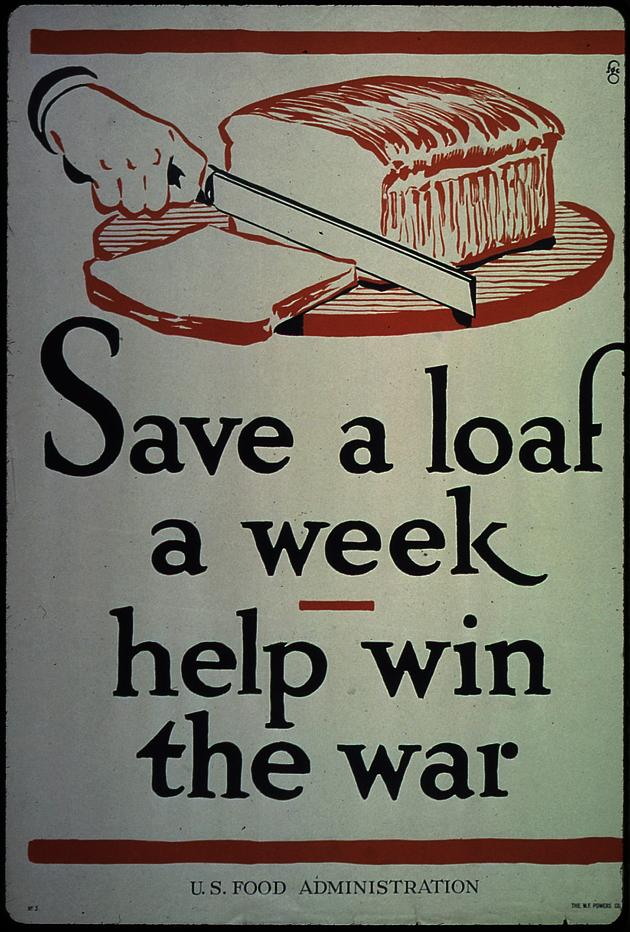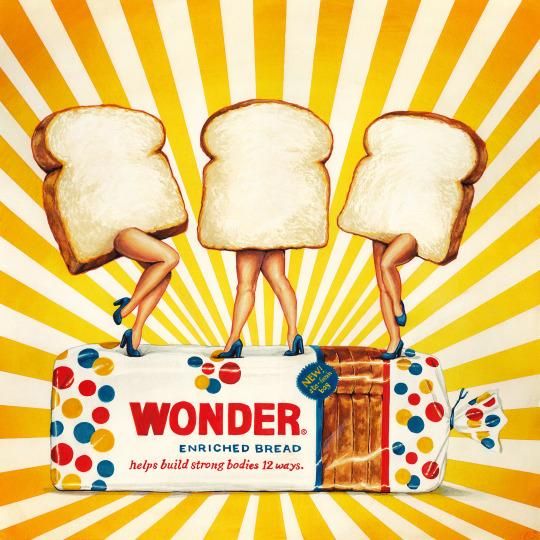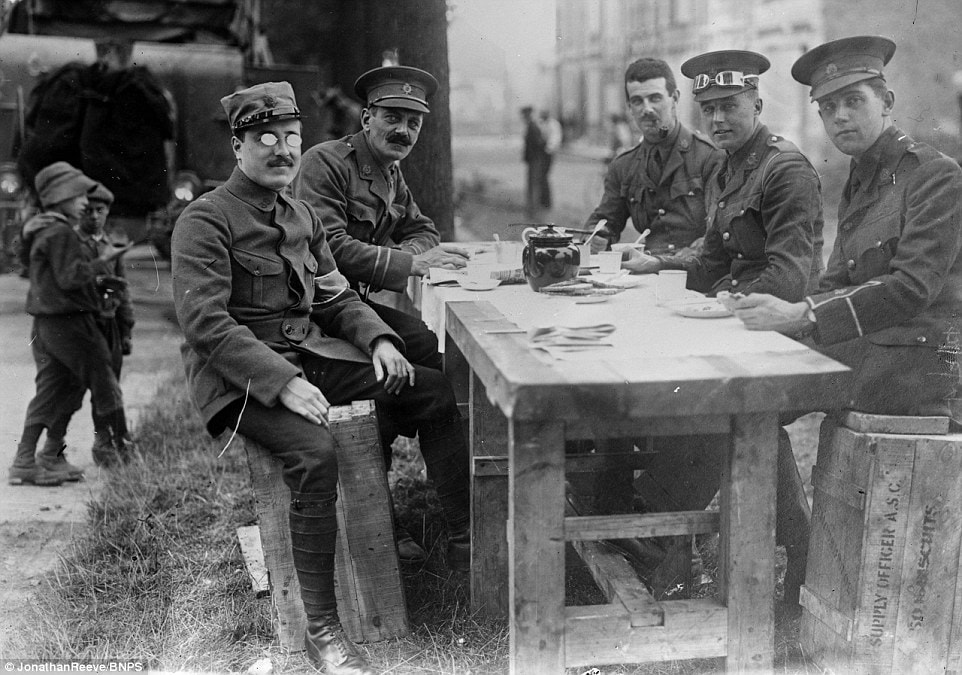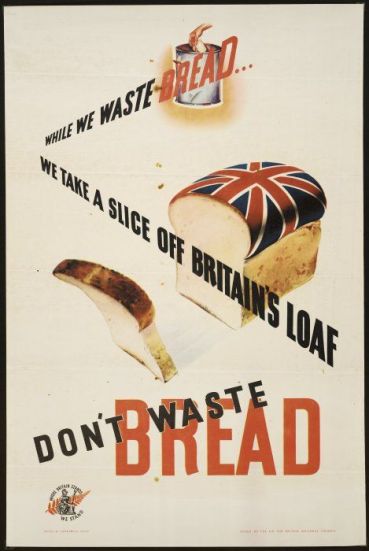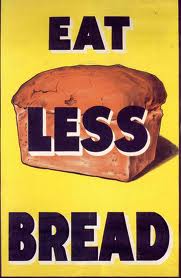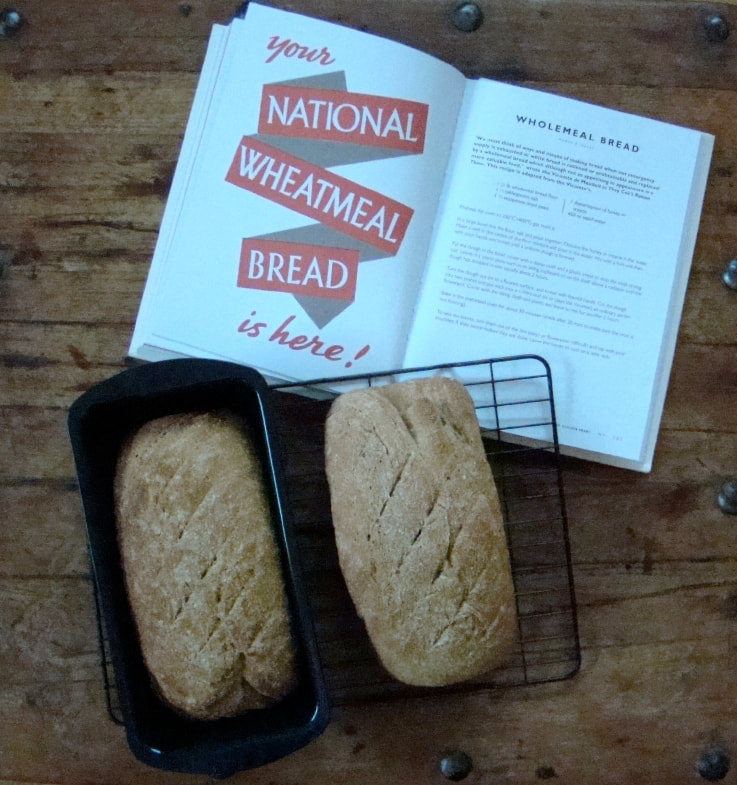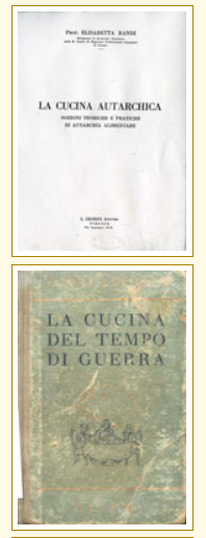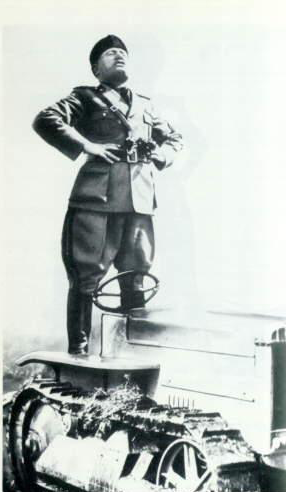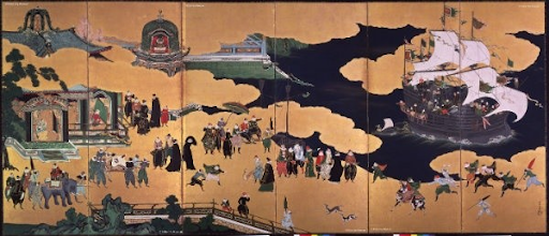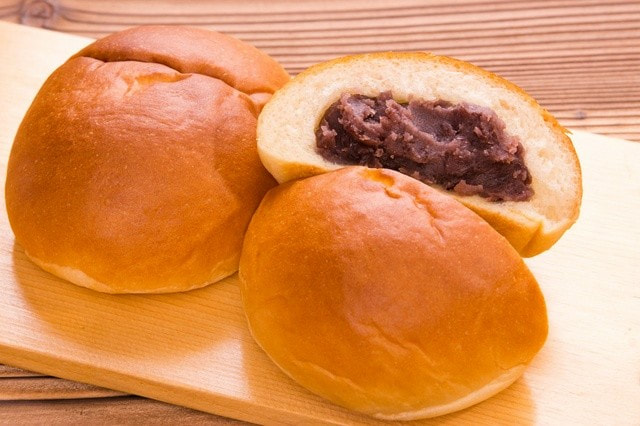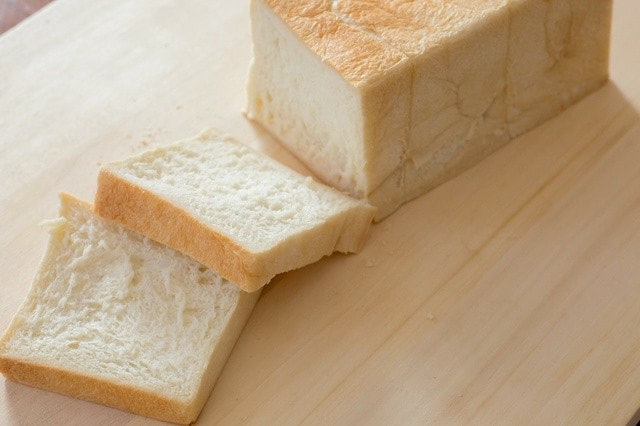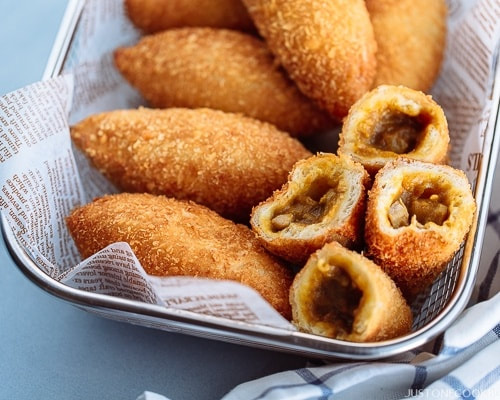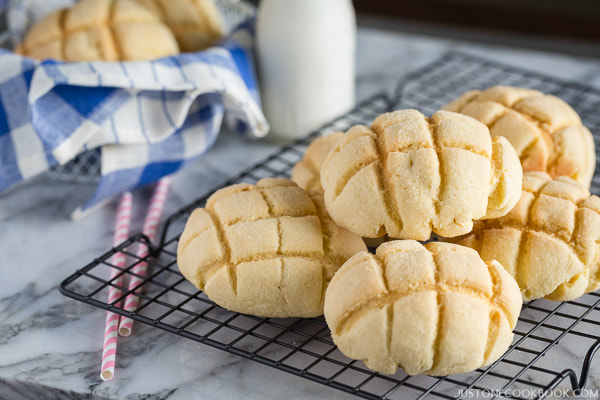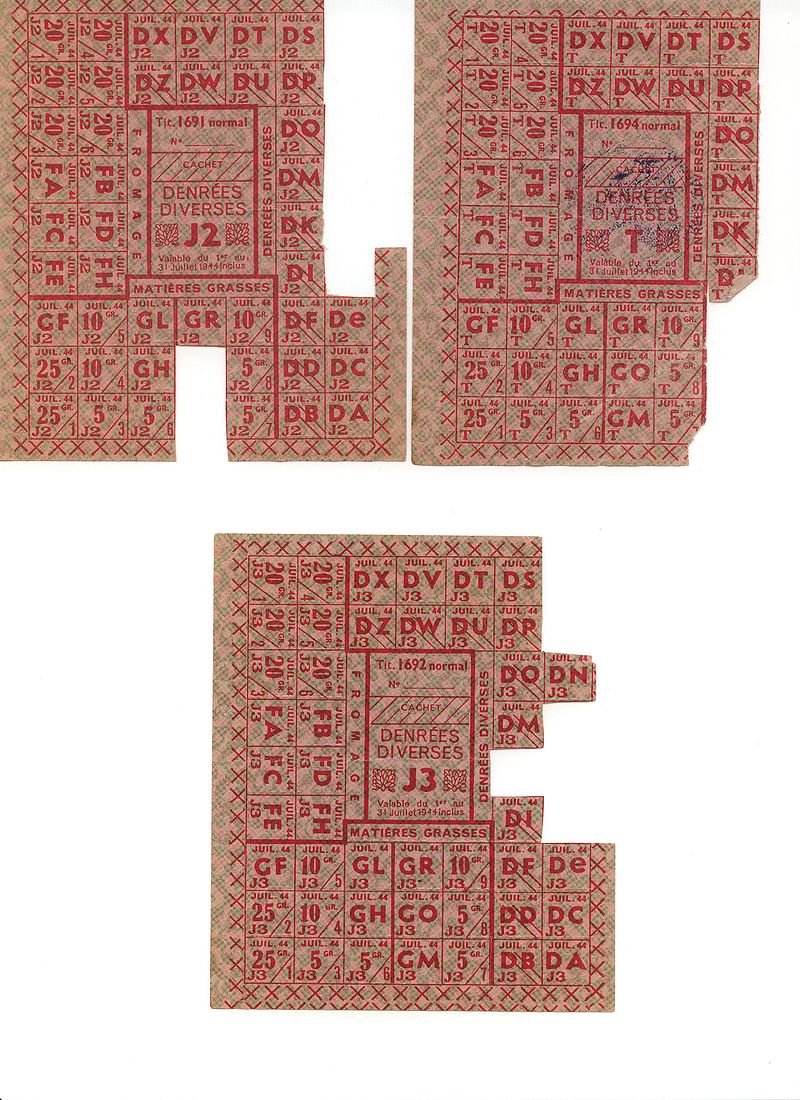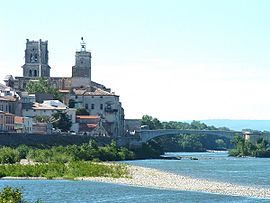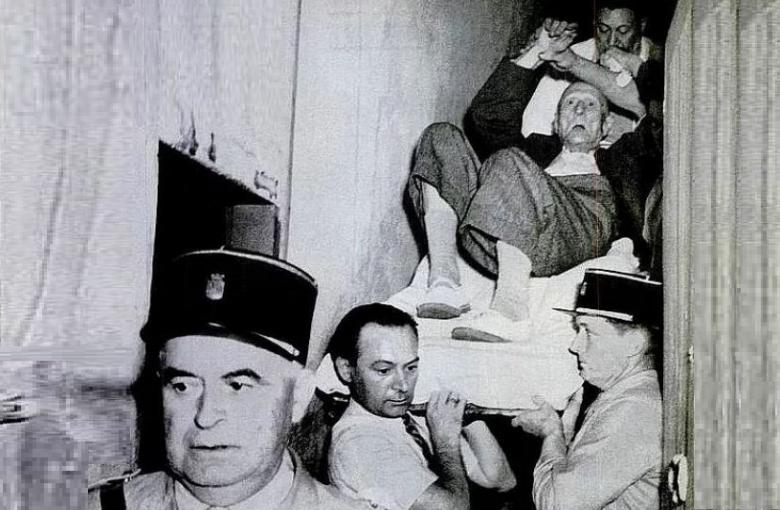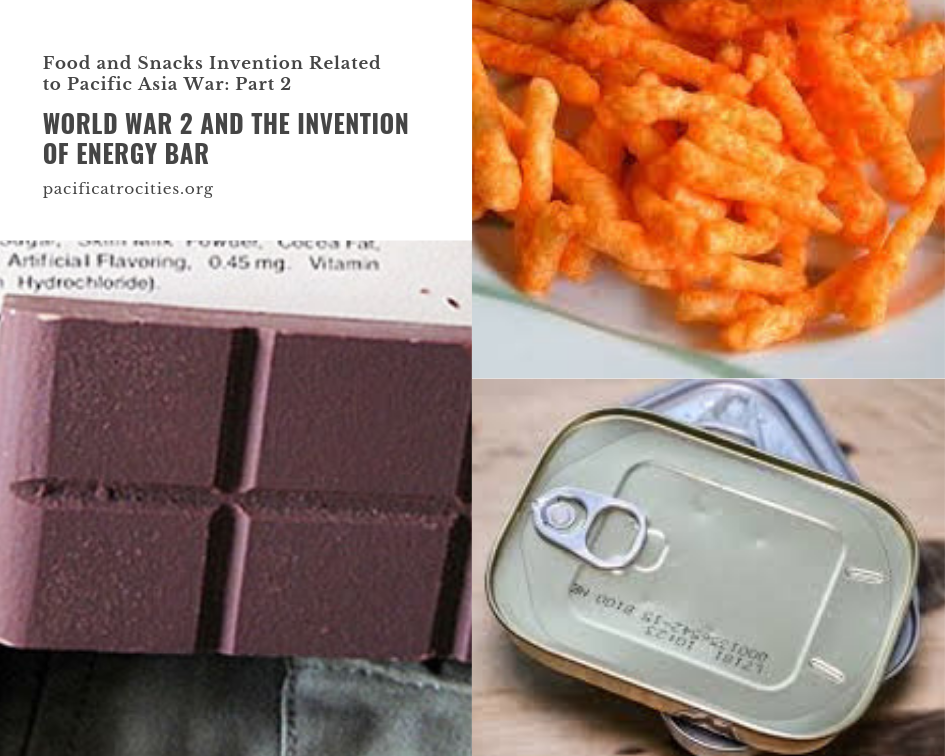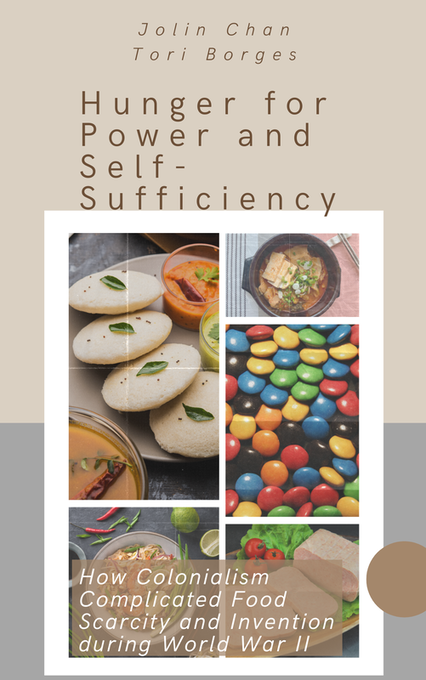Food and Snacks Invention Related to Pacific Asia War: Part 5 World War II- A Short Story of Bread4/9/2019 by Nickii Wantakan Arcado Bread is a staple food in almost every country’s diet due to its adaptability in both aesthetics and tastes. Each country involved in World War II has had an interesting experience with how they consume and produce bread, both during wartime and post-war. USA“The greatest thing since sliced bread” - a motto used in the United States since the creation of bread slicing machines and the introduction of the Wonder Bread in 1928 which was the “great leap forward” in terms of food technology in U.S. History. That came to a brief end in 1943 when the United States, under Food Administrator Claud R. Wickard, banned bread as a wartime conservation measure. The ban was used to both rations the amount of bread that was being consumed as well as counteract the rise in bread prices due to the increase in flour prices. Looking back, one cannot help but be amused by angry consumers inconvenienced by the change in (in today’s terms, one can consider this a “first world problem”). One woman sent a letter to the New York Times stating: “I should like to let you know how important sliced bread is to the morale and saneness of a household. My husband and four children are all in a rush during and after breakfast. Without ready-sliced bread I must do the slicing for toast—two pieces for each one—that's ten. For their lunches, I must cut by hand at least twenty slices, for two sandwiches apiece. Afterward, I make my own toast. Twenty-two slices of bread to be cut in a hurry!” The ban was rescinded a year later in 1943 when the War Production Board recognized the growing public outcry for bread and their relatively low savings. Wax paper was then used to preserve bread for up to 4 months at a time. BritainThe National Loaf, a bread made with wholemeal flour with added calcium and vitamins, was introduced by the Federation of Bakers in 1942. The Federation, which was a branch of Britain’s Ministry of Food, reasoned that wholemeal flour was used instead of the typical white flour (found in most bread types) due to the shortage of ingredients available during the war. Wheatmeal was unbleached flour that was extracted from hulled wheat grain, which contained starchy endosperm, wheat germ, and bran. The flour was gray, creating an unappetizing appearance. While nutritionist praised the bread for containing necessary nutrients such as calcium and vitamins, the bread was coarse, crumbly, and dry. Soldiers were either required to dip their bread in water to add moisture or eat their portion by the end of the day. While the wholemeal was reserved for feeding soldiers and civilians, white flour was solely reserved for food manufacturers who made cookies and cakes. While the loaf was abolished in 1956, it does contain almost identical similarities with today’s brown bread found at your local supermarket or bakery. ItalyThe rationing of bread and other carbohydrates were particularly painful for Italy compared to other countries. This was due to the fact that the country based a majority of their diet on carbohydrates which included pasta, bread, and polenta. Italy began rationing bread during the beginning of the First World War with the Battle of the Grain. The policy was enacted by Italian Fascists during the 1920s, advocating for the increase of cereal production (so that Italians can begin becoming self-sufficient in grain), the reduction of the balance of trade deficit, and the decrease in the necessity for foreign imports of bread. In the Second World War, the government of war set a firm quota on the amount of food each person was to receive: 100 g of bread per day, one kg or 2 of rice. The rise of the black market was also extremely popular, where civilians could obtain ingredients like oil or salt under the table. These items were unregulated and often times came from other wartime activities. For example, some Italian civilians would obtain salt from train tracks, as during the winter, salt was put on the tracks to prevent trains from slipping. The salt was collected, boiled in water, and strained. A culture of salvaging food in Italy began, and a number of articles, books, and tests educating Italian women on how to reclaim and recycle food became increasingly popular. For example, Non sprecare (Do not waste) consisted of a number one rule to: “Pay attention to everything that gets thrown out in the garbage. Everything can be used”. Articles such as La cucina autarchica(Self-sufficient cooking) by Elisabetta Randi and A cucina del tempo di guerra (Cooking during the war) by Lunella De Seta were also published in Florence, Italy. JapanThe introduction of bread in Japan initially started with trade between Portuguese traders and missions during the mid 16th century. When Christianity was banned in the 17th century, bread had quickly left with those who brought them. However, the Japanese word “pan”, the local adaptation of pão (bread) in Portuguese, stuck. There were some instances of success with pan, and in the Meiji Period, Yasubei Kimura created anpan (あんパン), bread buns that were stuffed with red bean paste called anko. When World War II, rolled around, bread was again introduced to Japan in large quantities and was reintroduced to the Japanese diet. Like other nations involved in the war, Japan was facing massive food shortages. Large quantities of wheat were delivered to Japan by the Germans. Shortly after the war, bread possessed a historical symbol of American occupation and a somewhat poor replacement for white rice. U.S. soldiers would distribute cheaply made factory bread and powdered milk to Japanese civilians, specifically school children in their school lunch (kyushoku) system. Bread was also produced to make sandwiches for U.S. soldiers. Eventually, the ingredients in bread were adapted to suit Japanese tastes, becoming the heelless shokupan (食パン) seen commonly in Asian bakeries. Further on in the late 70s, Japan began embracing and employing different types of bread, creating a unique Japanese bread culture from curry to melon bread. FranceSimilar to Italy, France was also hit extremely hard with the rationing of bread during the war but with a more complicated layer. When France fell to Germany, the Nazis seized around 80% of France’s food production causing severe disruption to the French food economy well known around the world as the epitome of the birth of fine dining. Farm production also fell due to the lack of fuel and fertilizer. Food tickets issued by the Nazis were used for French citizens to ration out their food, and they were to exchange it for bread, butter, and cooking oil. The system, however, was completely mismanaged, leading to malnourishment (calories were kept at 1,300 per day or less) and the rise of black markets in France. An extremely unusual event involving bread occurred in the village near Avignon called Pont Saint-Esprit. One of the village bakers received a supply of gray flour, which was a surprise considering the government had firmly controlled the distribution of flour since the beginning of the war. As the baker was already laking the ingredients to make baguettes, he proceeded to make and sell his bread accordingly. However, within the next few days, what has become known now as le pain maudit (The cursed bread) wreaked havoc in the small village, plunging villagers into violently ill conditions. Symptoms included hallucinations, convulsions, swollen limbs, vomiting, burning sensations, and gangrene. Other villagers grew extremely violent, ripping up bed sheets and jumping out windows. Some 200+ individuals were affected. While causes for the outbreak are still being debated, two hypotheses have gained the most support; Ergotism and mercury poisoning. Ergotism poisoning is caused by consuming ergot, a parasitic fungus that lives in rye when certain weather conditions, in this case, cold winters preceded by the rainy season, are met. The fungus grows to an oversized, violet grain and protrudes out of the plant. A portion of the fungus called Lysergic acid has been used to create LSD and overconsumption of the acid could result is hysteria and vivid hallucinations. On the other hand, others have claimed that the outbreak was caused by Mercury poisoning as France at the time were using large quantities of use of nitrogen trichloride to bleach flour. Other theories also raise the possibility of a CIA experiment in chemical warfare gone wild. While a conclusion has not been drawn, one could conclude that bread rationing in France set an example of the importance of quality assurance and, of course, not making bread out of random ingredients found on the street. References:
Related ArticlesRead and Learn More!
0 Comments
Leave a Reply. |
- Home
- Stories
-
Internship
- Summer 2024 Internship
- Summer 2023 Internship
- Fall 2022 Internship
- Summer 2022 Internship
- Summer 2021 Internship
- Fall 2020- Spring 2021 Internship
- Summer 2020 Internship
- Fall 2019 Internship
- Summer 2019 Internship >
- School Year 2018-2019 Internship
- Summer 2018 Internship >
- Fall 2017 Internship
- Summer 2017 Internship >
- Books
- Archives
-
Resource Page
-
Supplementary Research Guides
>
- Unit 731 - Guide >
-
Philippines' Resistance - Guide
>
- Philippines World War II Timeline
- The Japanese Invasion & Conquest of the Philippines
- Bataan Death March
- Formation of Underground Philippines Resistance
- Supplies of the Guerrilla Fighters
- The Hukbalahap
- Hunter's ROTC
- Marking's Guerrillas
- United States Army Forces in the Philippines of Northern Luzon (USAFIP-NL)
- The Aetas
- Chinese and Filipino-Chinese Nationalist Guerrilla Units
- The Female Faces of the Philippine Guerrillas
- Rising Sun Flag - Guide >
- Pinay Guerrilleras - Guide >
- Fall of Singapore - Guide >
- Three Years and Eight Months - Guide >
- Siamese Sovereignty - Guide >
- The Khabarovsk War Crimes Trial - Guide >
- Unit 731 Cover-up : The Operation Paperclip of the East - Guide >
- Marutas of Unit 731 - Guide >
- Prince Konoe Memoir - Guide >
- Competing Empires in Burma - Guide >
- Battle of Shanghai - Guide >
- Ishi Shiro - Guide >
- Taiwan The Israel of the East - Guide >
- Seeking Justice for Biological Warfare Victims of Unit 731 - Guide >
- Rice and Revolution - Guide >
- Clash of Empires - Guide >
-
Hunger for Power and Self-SufficiencyI - Guide
>
- The Influence of War Rations on Post-War Culinary Transformations
- How World War II Complicated Food Scarcity and Invention
- American Military Innovations
- Government-Sponsored Food Inventions in Europe during World War II
- Feeding the Army: The Adaptation of Japanese Military Cuisine and Its Impact on the Philippines
- Mixed Dishes: Culinary Innovations Driven by Necessity and Food Scarcity
-
Denial A Quick Look of History of Comfort Women and Present Days’ Complication - Guide
>
- The Comfort Women System and the Fight for Recognition
- The Role of Activism and International Pressure
- The Controversy over Japanese History Textbooks
- The Sonyŏsang Statue and the Symbolism of Public Memorials
- Activism and Support from Japanese Citizens
- The Future of Comfort Women Memorials and Education
- Echoes of Empire: The Power of Japanese Propaganda - Guide >
- Lesson Plans >
-
Supplementary Research Guides
>
|
Pacific Atrocities Education
730 Commercial Street San Francisco, CA 94108 415-988-9889 |
Copyright © 2021 Pacific Atrocities Education.
We are a registered 501 (c)(3) charity. |
- Home
- Stories
-
Internship
- Summer 2024 Internship
- Summer 2023 Internship
- Fall 2022 Internship
- Summer 2022 Internship
- Summer 2021 Internship
- Fall 2020- Spring 2021 Internship
- Summer 2020 Internship
- Fall 2019 Internship
- Summer 2019 Internship >
- School Year 2018-2019 Internship
- Summer 2018 Internship >
- Fall 2017 Internship
- Summer 2017 Internship >
- Books
- Archives
-
Resource Page
-
Supplementary Research Guides
>
- Unit 731 - Guide >
-
Philippines' Resistance - Guide
>
- Philippines World War II Timeline
- The Japanese Invasion & Conquest of the Philippines
- Bataan Death March
- Formation of Underground Philippines Resistance
- Supplies of the Guerrilla Fighters
- The Hukbalahap
- Hunter's ROTC
- Marking's Guerrillas
- United States Army Forces in the Philippines of Northern Luzon (USAFIP-NL)
- The Aetas
- Chinese and Filipino-Chinese Nationalist Guerrilla Units
- The Female Faces of the Philippine Guerrillas
- Rising Sun Flag - Guide >
- Pinay Guerrilleras - Guide >
- Fall of Singapore - Guide >
- Three Years and Eight Months - Guide >
- Siamese Sovereignty - Guide >
- The Khabarovsk War Crimes Trial - Guide >
- Unit 731 Cover-up : The Operation Paperclip of the East - Guide >
- Marutas of Unit 731 - Guide >
- Prince Konoe Memoir - Guide >
- Competing Empires in Burma - Guide >
- Battle of Shanghai - Guide >
- Ishi Shiro - Guide >
- Taiwan The Israel of the East - Guide >
- Seeking Justice for Biological Warfare Victims of Unit 731 - Guide >
- Rice and Revolution - Guide >
- Clash of Empires - Guide >
-
Hunger for Power and Self-SufficiencyI - Guide
>
- The Influence of War Rations on Post-War Culinary Transformations
- How World War II Complicated Food Scarcity and Invention
- American Military Innovations
- Government-Sponsored Food Inventions in Europe during World War II
- Feeding the Army: The Adaptation of Japanese Military Cuisine and Its Impact on the Philippines
- Mixed Dishes: Culinary Innovations Driven by Necessity and Food Scarcity
-
Denial A Quick Look of History of Comfort Women and Present Days’ Complication - Guide
>
- The Comfort Women System and the Fight for Recognition
- The Role of Activism and International Pressure
- The Controversy over Japanese History Textbooks
- The Sonyŏsang Statue and the Symbolism of Public Memorials
- Activism and Support from Japanese Citizens
- The Future of Comfort Women Memorials and Education
- Echoes of Empire: The Power of Japanese Propaganda - Guide >
- Lesson Plans >
-
Supplementary Research Guides
>
